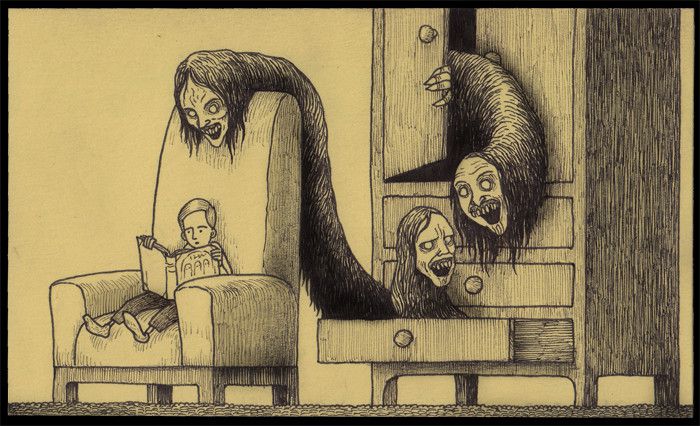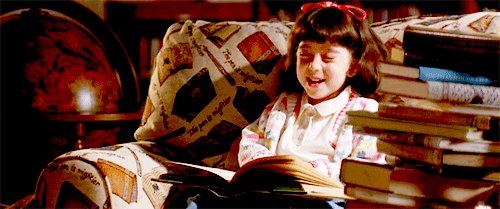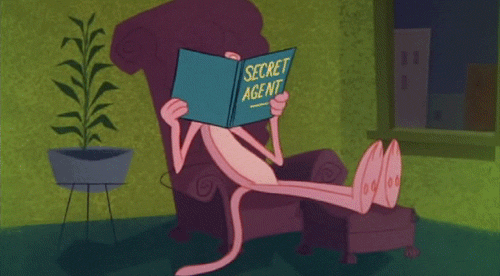Speed reading How to quickly absorb information, knowing the structure of the text

Illustration author: John Kenn
Knowing how certain types of works are written, one can make their reading easier. This is especially useful if the time for exploring the material is limited.
Before any reading it is important to set a goal for yourself, for example, to enjoy a fiction book or to learn some information from a scientific article. Setting a goal along with knowledge of the structure of this type of text will help you quickly find the information you need.
Almost everything that we read can be attributed to one of three structural schemes of the text:
')
- Documentary and popular science format.
- Artistic format.
- Format of articles and news.
About these formats in the article and will be discussed.
Documentary and popular science literature

Documentary and non-fiction literature refers to a descriptive format. It consists of three parts: introduction, development, conclusion. This also includes thematic articles in the media, essays, books and textbooks.
If we are limited in time, then most likely, taking up a popular science or documentary book, we will look at its beginning and end. And this is true, because the most important information is located there.
Usually at the beginning of the book, the author raises a topic or question and expresses the main idea of the book. Then the topic develops, and at the end, reasonable conclusions are offered. Reading the textbook, you can see that this structure is repeated, and it is repeated several times.
Often the introduction or the first chapter sets forth a thesis or idea, and the structure of the chapter will be based on the same formula: idea, development and conclusion. In the remaining chapters, the main idea or idea will be developed with the help of evidence and refutations of various facts and theories. In the final chapter or epilogue will be summarized all the main ideas of the author and summarized.
Of course, reading the book or the entire chapter, we will learn more information than when reading only the beginning and the end. Otherwise, the middle of the book could be removed during editing. And sometimes it is impossible to say for sure that for all books the structure will be one. In some books, the main part contains the step-by-step development of complex ideas, in others - unimportant illustrations and examples.
But in any case, with limited time information will be enough after reading the beginning and end of the material. But for this it is necessary to determine the purpose of reading, then it will be possible to develop a plan for obtaining information.
For example, reading a popular science book on hereditary diseases , we set ourselves the goal of finding out more about the reasons for their occurrence.
We go over the table of contents, so it will be possible to determine in which part of the material the information we are interested in. Having decided on the place of the search, we read the beginning, open the middle and see whether it contains useful information or this part is devoted to lengthy reasoning, and then we become acquainted with the conclusions at the end.
For a general acquaintance with the material of this will be enough, everything will depend on the required depth of study of the material.
Before reading the book, take a few minutes to determine the purpose of reading, in the future it will help to quickly obtain the necessary information.
Fiction

Most fiction is easier to read and more accessible to most readers, since it is based on human experience, but in relation to the structure of the text - this is not so.
With all the ease of reading and understanding of fiction, there is a complex structure and organization. Popular science and documentary texts are written to convey information, but fiction is one of the forms of art. The goal of fiction is not to teach something, but to give a sense to the sensual experience of the book’s heroes.
The story is the story of a character who gets into trouble and tries to get out of it.
The basic structure of a work of art is one person or several characters, they have problems with which they try to do something. Then the plot becomes complicated and the characters get into trouble, and after - the situation is resolved.
This structure is typical not only for stories, but also for novels. It is found inside the chapters of the works, it may overlap and overlap: one character has his own problem, the other has his own.
Knowledge of the structure of fiction is unlikely to help improve the speed of reading, but it can increase its effectiveness.
For me, reading a work of art has one goal - to have fun. It is not possible to use fast reading methods, since they do not allow savoring certain moments of the works.
We read articles and news almost instantly.

Many feel obliged to read all the articles - from the first to the last line, some even open them in new tabs or save them in bookmarks - hoping that later it will be time to read it. Over time, this array of articles becomes huge, and can even spoil our mood - we can begin to feel guilty for not reading, or consider ourselves obliged to read them.
There is nothing good about it.
One of the reasons for fast reading articles is the presence of background knowledge: the more knowledge on the topic, the faster it is possible to read the material. In many sources of articles information is updated - there are rarely fundamentally new types of data. Most often this is just an update available or an addition to what was described earlier.
Thus, reading the same source day by day, we increase our background base.
Another reason to quickly read articles is their structure. Most articles are thematic; this can be determined by sources or sections.
For feature articles most often characterized by the structure of popular science and documentary literature with a clearly marked introduction and conclusion, and therefore the methods of reading popular science literature are also suitable for subject articles.
Reading the news has another goal - to find out the latest events, reactions to them and opinions about what happened. News is the fastest readable format. These are messages on the front page of news and information sites, and most of this information will become obsolete by tomorrow. Sometimes they may not lose relevance for several days or even weeks.
The structure of the news is an inverted pyramid: the most important information is at the beginning, and everything that follows is less significant. Thanks to this structure, the easiest way to capture the attention of the reader, and even any news message can be reduced after the first paragraph or in any other place without losing information value.
In the news articles all the important information is in the first few paragraphs.
Do not confuse news and popular science articles, they may be similar, but the latter have information at the beginning and end, as well as the topical ones. In the news materials, however, you can go over the first paragraphs and go on without fearing to miss something useful.
This completes the series of articles on the book "Speed Reading" by Peter Kamp . Those who are interested in studying speed reading are invited to the Smartprogress thematic group , I will help you with it in studying and you will be able to get community support.
More fast reading articles:
- Speed reading How to read eight times faster if demons are chasing you
- Speed reading How to memorize and understand more if you learn to read eight times faster


Read more of our articles on our blog: SmartTalks
Source: Peter Camp. Speed reading How to memorize more, reading 8 times faster
Source: https://habr.com/ru/post/321770/
All Articles